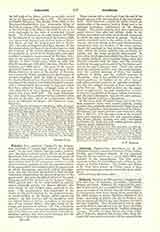

Palatini (Lat. palatium, “palace”), the designation, primarily, of certain high officials of the papal court. In the early Middle Ages the judices palatini were the highest administrative officers of the papal household; with the growth of the temporal power of the popes they acquired great importance. These judices palatini were (I) the primicerius notariorum and (2) secundicerius notariorum, the two superintendents of the papal notarii, who superintended the preparation of official documents, conducted judicial investigations, and also exercised jurisdiction in legal matters voluntarily submitted by the interested parties to the papal court; they were the highest officers of the papal Chancery and of the Archives in the Lateran Palace. Other palatini were: (3) the nomenculator, or adminiculator (originally perhaps two distinct officials), who took charge of, and decided upon, petitions to the pope. (The nomenculator was superseded in the course of the ninth century by the protoscriniarius, or superintendent of the Roman public schools for scribes.) (4) The arcarius and (5) saccellarius were the highest financial officers, custodians of the treasures of the Lateran Palace, who had charge of the receipt and payment of moneys. (6) The primicerius and (7) secundicerius defensorum, being superintendents of the defensores, who aided and protected widows, orphans, captives, and other needy persons, had the supervision of charitable institutions. These various offices developed from the end of the fourth century, with the formation of the papal household. Their functions covered the whole central administration of the papacy, both at Rome and in the outlying possessions (patrimonia) of the Roman Church. The judices palatini were also employed as papal envoys; they also had definite duties in the solemn processions and other great church ceremonies at which the pope was present in person. Their authority continued down to the middle of the eleventh century, when the reform of the papal administration, inaugurated after the troubles of the tenth century, placed the cardinals in that position at the Roman curia, which the judices palatini had previously occupied, and the latter gradually disappeared. In later times the designation palatini has been borne (I) by certain cardinals, whose position brings them into constant relations with the pope, and who formerly resided in the papal palace, and (2) by the highest prelates of the pope’s personal suite. Until very recent times the cardinales palatini were: the cardinal-prodatary, the cardinal secretary of State, the cardinal secretary of Briefs, and the cardinal secretary of Memorials. Pius X has abolished the two last-mentioned positions; the holders of the other two are still called cardinales palatini, or “palatine cardinals”, but only the cardinal secretary of State actually lives in the Vatican. The praelati palatini are: the major-domo (maggiordomo), the high chamberlain (maestro di camera), the auditor of the pope (uditore santissimo), and the pope’s theologian (maestro del sacro palazzo). The last-named is always a Dominican. In the times of the Frankish kings and of the German emperors there were comites palatini, counts palatine, who originally presided in the High Court of Justice of a palatinate as representatives of the Crown. In Germany the counts palatine were entrusted, after Otto I (936-73), with the supervision of the imperial lands and revenues, and were also imperial judges. The Court officials bearing this title, introduced by Charles IV (1346-78), had various powers, partly judicial, partly administrative.
J. P. KIRSCH

